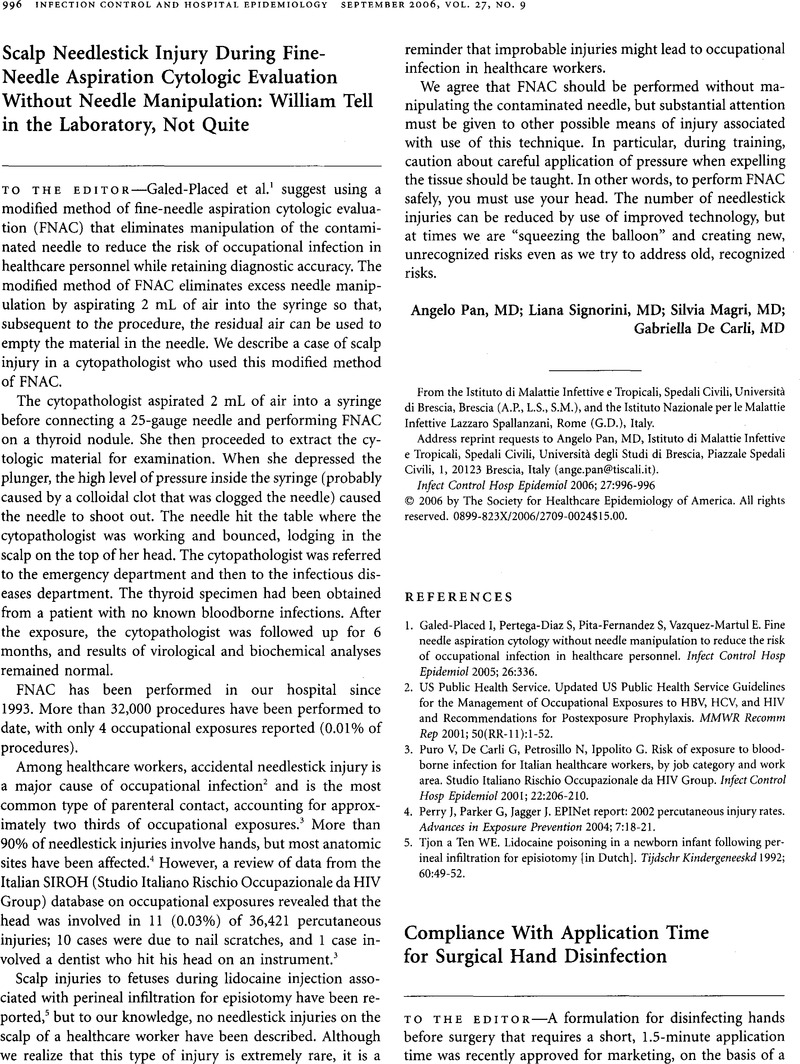Crossref Citations
This article has been cited by the following publications. This list is generated based on data provided by Crossref.
Placed, Ignacio Galed
2008.
Are We “Squeezing The Balloon” When Reducing the Risk of Occupational Infection? Reply to Pan et al..
Infection Control & Hospital Epidemiology,
Vol. 29,
Issue. 1,
p.
95.



